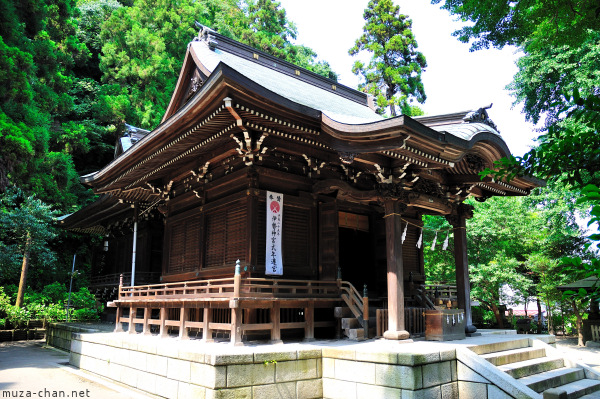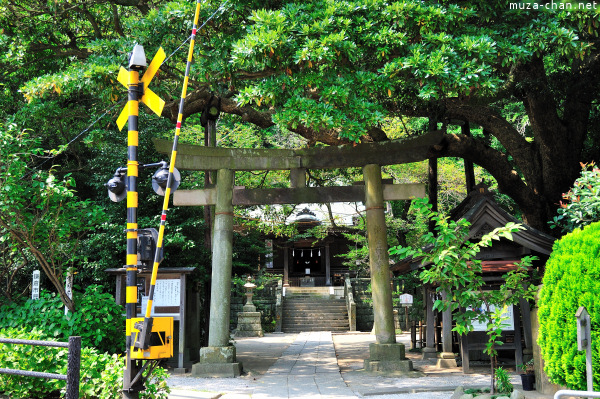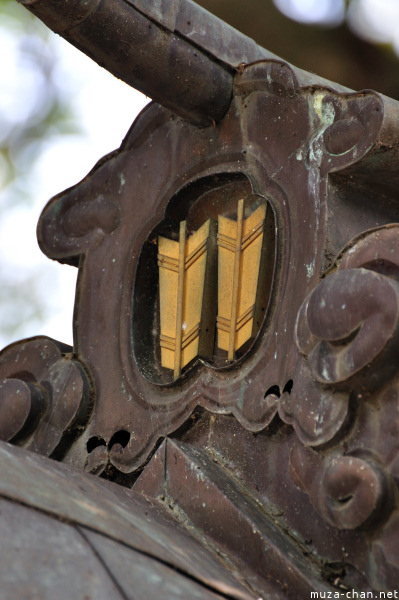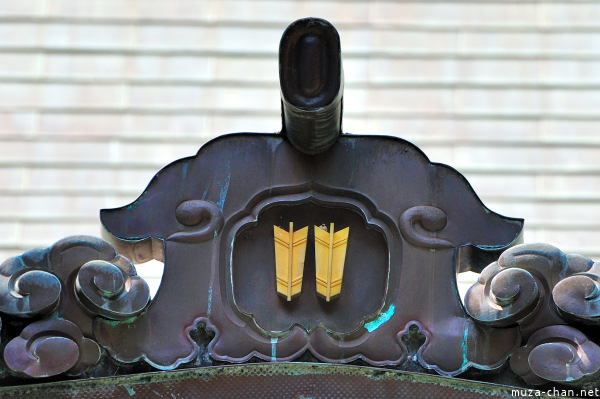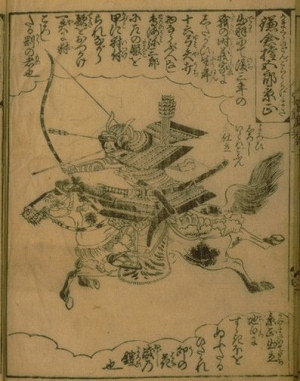One of my favorite Shinto Shrines is the Goryo Jinja, located approx. 2 kilometers from Kamakura Station.
The Shrine is dedicated to the spirit of a samurai with an impressive courage, Kagemasa (Gongoro) Kamakura, from the Taira clan.
A symbol from the Shrine that caught my attention, a pair of fletchings represented on the roof, is related to an impressive story taking place in the year 1085, during a battle from the Gosannen War.
Kagemasa was only 16 years old when he participated on a battle. During the battle, he was hit by an arrow that pierced his left eye.
However, the samurai continued to fight, with the arrow stuck in his eye, until the battle was over.
When he returned in the camp, another samurai tried to remove the stuck arrow by putting his foot on Kagemasa’s forehead.
But, because being stepped on the face by foot was considered an insult, Kagemasa was angered, stopped him and accused him of rude behavior. His colleague apologized for his rudeness and the arrow was eventually pulled out in a different manner.
Kagemasa’s bravery was highly praised as a role model for samurai and he even became a Kabuki hero.
To commemorate this story, the fletchings became the crest of the Shrine and that’s why they appear on the roof.
Inside the Shrine, there is a wooden statue of Kagemasa and his wife. Also, it is believed that the Shrine has powers of healing eye diseases.
Unul din altarele mele preferate este Goryo Jinja, aflat la aproximativ 2 km de staţia Kamakura.
Altarul este dedicat spiritului unui samurai cu o tărie de caracter impresionantă, Kagemasa (Gongoro) Kamakura, un samurai din clanul Taira.
Un simbol de pe acoperişul altarului, reprezentând două săgeţi, care mi-a atras atenţia, este legat de o întâmplare cutremurătoare care a avut loc în anul 1085, în timpul unei bătălii din razboiul Gosannen.
Kagemasa avea doar 16 ani când a participat la bătălie. În timpul luptei a fost lovit de o săgeată care i s-a înfipt în ochiul stâng. Samuraiul însă a continuat să lupte, cu săgeata înfiptă în ochi, până la sfârşitul bătăliei.
Când s-a întors în tabără, un alt samurai a încercat să-i scoată săgeata din ochi, sprijinindu-şi un picior în fruntea lui Kagemasa, pentru a avea forţa să extragă săgeata.
Deoarece atingerea feţei cu piciorul era considerată o insultă, Kagemasa s-a supărat şi l-a acuzat de purtare nepoliticoasă. Samuraiul şi-a cerut scuze, iar săgeata i-a fost scoasă apoi prin alte metode.
Bravura lui Kagemasa a fost foarte preţuită şi a fost considerat un model pentru samurai, devenind în timp chiar şi eroul unei drame Kabuki.
În amintirea acestei întâmplări, săgeţile au devenit simbolul altarului şi de aceea sunt reprezentate pe acoperiş.
În altar există o statuie de lemn a lui Kagemasa şi soţiei acestuia. Deasemenea, se crede că altarul are puterea de a vindeca boli de ochi.
